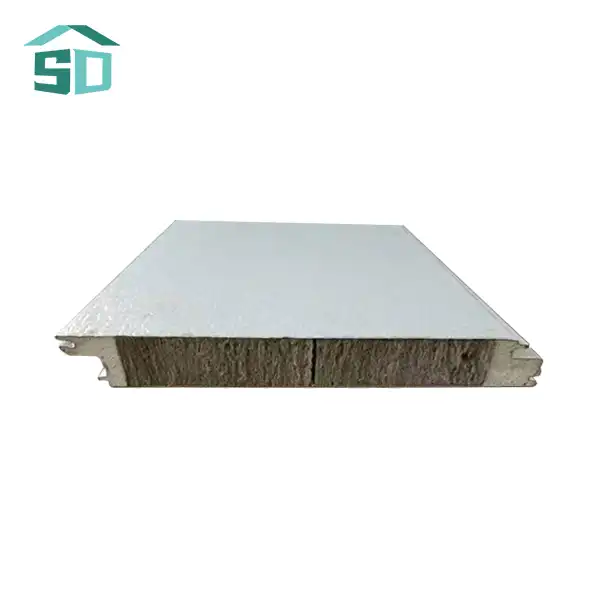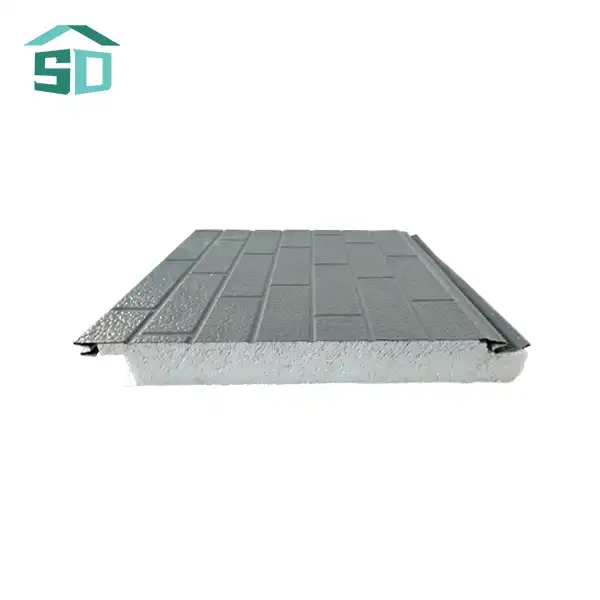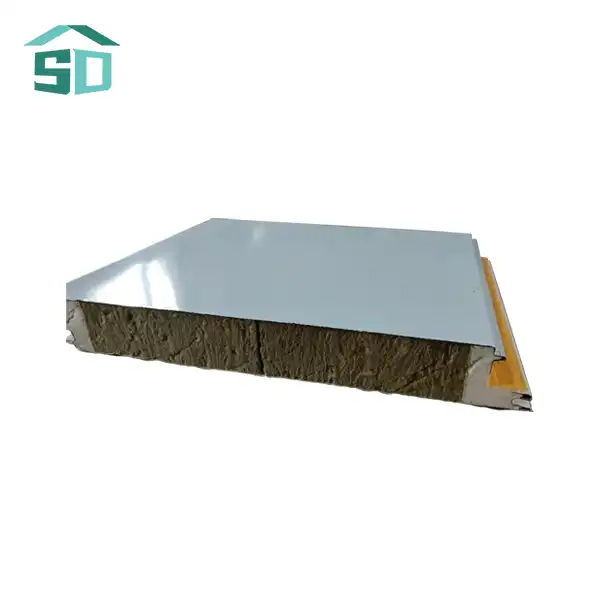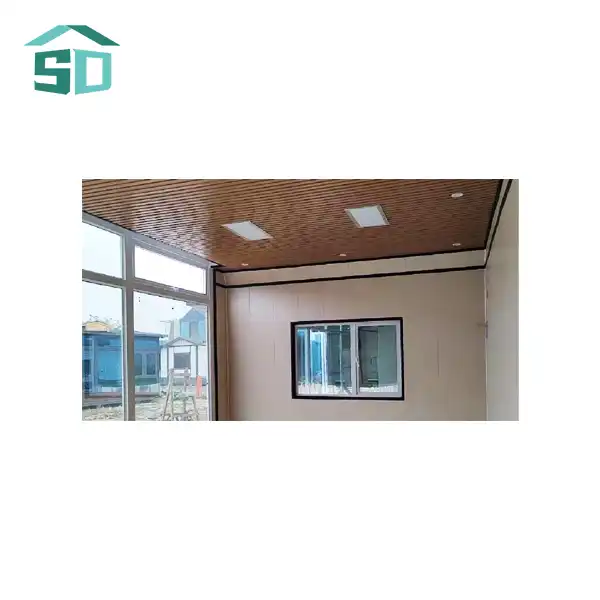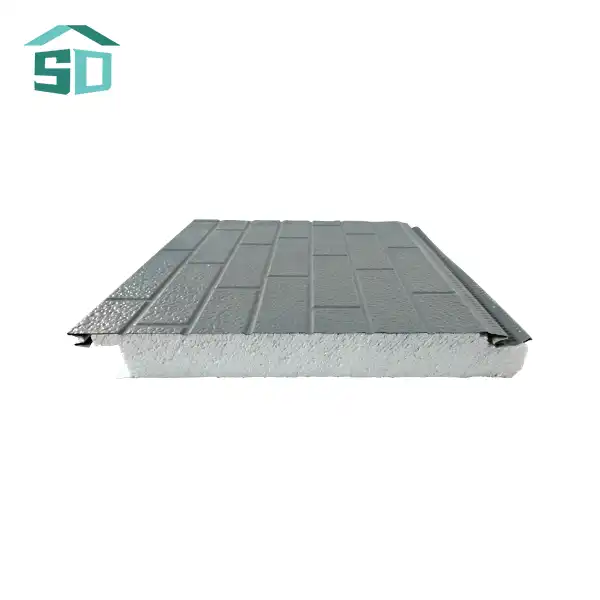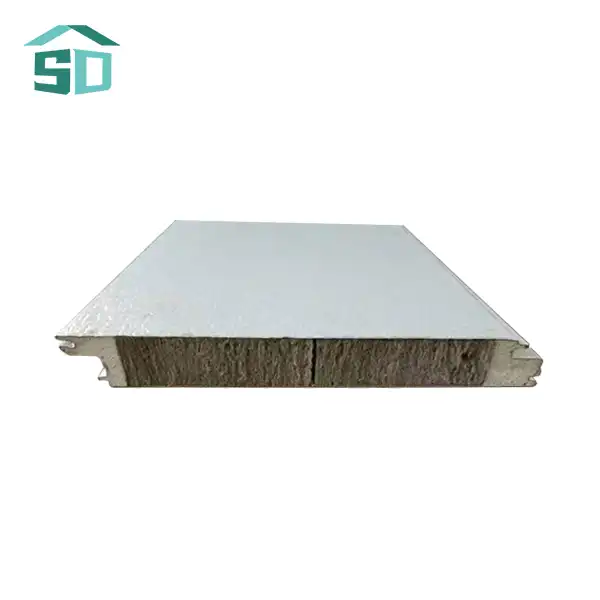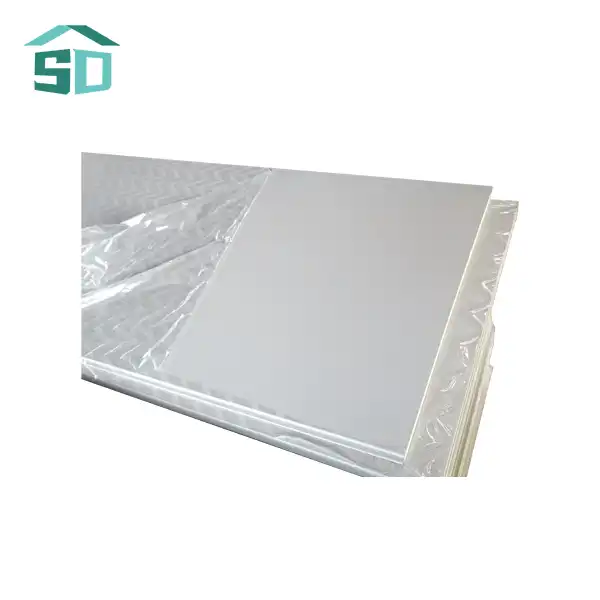The Science Behind Thermal Insulation Wall Panels and Sound Reduction
To truly appreciate the role of thermal insulation wall panels in soundproofing, it's essential to understand the science behind their noise-reducing capabilities. These panels, primarily designed for thermal insulation, have inherent properties that make them effective at mitigating sound transmission.
Density and Sound Absorption
Thermal insulation wall panels are typically made from materials like polyurethane, polystyrene, rock wool, or glass wool. These materials are characterized by their high density and porous structure. This combination allows the panels to absorb sound waves effectively. When sound waves encounter the dense, porous surface of the insulation panel, they're partially converted into heat energy through friction within the material's fibers or cells. This process, known as sound absorption, reduces the amount of sound that passes through the panel.
Multi-layered Structure and Sound Reflection
Many thermal insulation wall panels feature a multi-layered structure. This design not only enhances their thermal performance but also contributes to their sound-reducing properties. As sound waves travel through different layers of varying densities, they're partially reflected at each interface. This reflection process further diminishes the sound energy, reducing the overall transmission of noise through the panel.
Vibration Damping
Another way thermal insulation wall panels contribute to soundproofing is through vibration damping. The materials used in these panels have inherent damping properties, meaning they can absorb and dissipate vibrational energy. When sound waves cause structural elements to vibrate, these panels can help minimize the transmission of these vibrations, further reducing noise levels.
Maximizing Soundproofing with Thermal Insulation Wall Panels
While thermal insulation wall panels offer significant sound-reducing benefits, their effectiveness can be maximized through strategic implementation and complementary techniques. Here are some ways to enhance the soundproofing capabilities of these panels:
Optimal Panel Selection
Not all thermal insulation wall panels are created equal when it comes to soundproofing. Panels with higher density and greater thickness generally perform better at reducing noise transmission. For instance, rock wool panels often outperform polystyrene in terms of sound reduction due to their higher density. When selecting panels, consider their Sound Transmission Class (STC) rating, which indicates their ability to block sound. Higher STC ratings correspond to better sound insulation properties.
Professional Installation
The effectiveness of thermal insulation wall panels in soundproofing heavily depends on proper installation. Any gaps or poor sealing can significantly reduce their noise-reducing capabilities. Professional installation ensures that panels are correctly fitted, with all seams and edges properly sealed. This not only maximizes their soundproofing performance but also enhances their thermal insulation properties.
Complementary Soundproofing Techniques
To achieve optimal soundproofing, thermal insulation wall panels should be used in conjunction with other acoustic treatments. This might include:
- Adding mass-loadedvinyl between the insulation and drywall
- Using soundproof drywall or multiple layers of standard drywall
- Applying acoustic caulk to seal any gaps or cracks
- Implementing resilient channels to decouple the wall from the structure
- Installing sound-absorbing materials on the interior side of the wall
Beyond Soundproofing: Additional Benefits of Thermal Insulation Wall Panels
While their soundproofing capabilities are impressive, thermal insulation wall panels offer a host of other benefits that make them an excellent choice for various construction projects.
Energy Efficiency
The primary function of thermal insulation wall panels is to improve a building's energy efficiency. By reducing heat transfer through walls, these panels help maintain consistent indoor temperatures, reducing the load on heating and cooling systems. This leads to significant energy savings and lower utility costs over time.
Fire Resistance
Many thermal insulation wall panels are designed with fire safety in mind. They often come with fire ratings ranging from A1 to B2 (according to ISO 11925-2 standards), providing an additional layer of protection in case of fire. This feature is particularly valuable in commercial and industrial settings where fire safety is paramount.
Moisture Control
Thermal insulation wall panels can play a crucial role in moisture management within buildings. Many panels are designed to prevent moisture buildup, helping to maintain structural integrity and indoor air quality. This feature is especially beneficial in humid climates or areas prone to condensation issues.
Aesthetic Versatility
Cutting-edge warm separator divider boards offer a wide run of tasteful alternatives. With different surface wraps, including counting coating, anodizing, and portraying, and a large number of color alternatives, including RAL colors and custom tones, these boards can be custom-made to suit any engineering fashion or plan preference.
Durability and Low Maintenance
Thermal separator divider boards are outlined to withstand unforgiving climate conditions, advertising long-lasting execution with negligible support prerequisites. This strength deciphers to take a toll on investment funds over time, as the requirement for repairs or substitutions is altogether diminished.
Conclusion
Thermal insulation wall panels play a crucial role in creating soundproof buildings, offering significant noise reduction capabilities alongside their primary function of thermal insulation. While they're not the sole solution for soundproofing, their multifaceted benefits make them an indispensable component in modern construction projects aiming for energy efficiency, comfort, and noise control.
By understanding the science behind these panels and implementing them strategically, builders and homeowners can greatly enhance the acoustic environment of their spaces. The additional benefits of energy efficiency, fire resistance, moisture control, and aesthetic versatility further cement the position of thermal insulation wall panels as a smart choice for contemporary building solutions.
For more information about our range of thermal insulation wall panels and how they can benefit your specific project, please don't hesitate to contact us at info@sdqsc.com. Our team of experts is ready to help you achieve your construction goals with our high-quality, versatile products.
